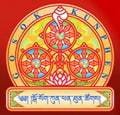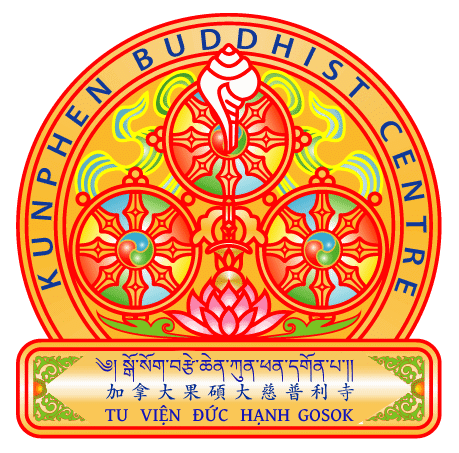Nagarjuna; 龍樹菩薩 (那嘎呵朱訥); Tibetan: ཀླུ་སྒྲུབ (lu drup); Wylie: klu sgrub; Sanskrit: Nāgārjuna;
Nagarjuna (150-250 CE) is the founder of the Madhyamaka school of Mahayana Buddhism, a most important Buddhist philosopher, one of the 84 Indian Vajrayana Mahasiddhas., one of the Seventeen Nalanda Masters, also one of the Six Ornaments. Some of his major works include:
- Mulamadhyamaka-karika (Fundamental Verses of the Middle Way)
- Sunyatasaptati (Seventy Verses on Emptiness)
- Vigrahavyavartani (The End of Disputes)
- Vaidalyaprakaraṇa (Pulverizing the Categories)
- Vyavaharasiddhi (Proof of Convention)
- Yuktisastika (Sixty Verses on Reasoning) ….
龍樹西元二世紀生於南印度, 為大乘佛教中最重要的論師之一, 中觀派創始者, 十七班智達之一, 金剛乘八十四大成就者之一, 六莊嚴之一。著作包括《大智度論》、《中論》、《十二門論》、《七十空性論》、《迴諍論》、《六十頌如理論》、《方便心論》等….


龍樹廣泛影響了大乘佛教各個宗派,中觀派以他為創始者,瑜伽行唯識學派與如來藏學派也多以他的著作來證明本身宗義的正確。在漢傳佛教中享有「八宗共祖」的稱號。在藏傳佛教中,與其大弟子提婆(亦名聖天)同被列入為佛教的二勝六莊嚴之一。密宗也以他為傳承上師之一。在中國,一些道教流派由於受到佛教禪宗、密宗的影響,也尊龍樹為神靈,尊稱其為「龍樹大醫王」、「衛國金剛龍樹王」,如閭山派。(維基百科)
Nagarjuna was a Brahmin youth with dazzling intellectual powers and the magical gift of invisibility. However, he grew bored of scholarly life and threw himself into a life of sensual pleasure. One day, he devised a plan to slip into the king’s palace with 3 friends. They were discovered, and Nagarjuna escaped by standing invisible, but his 3 friends were beheaded.
The entire district was in an uproar. Nagarjuna, filled with self-disgust went willingly into exile. Frustrated and dissatisfied with life, he set out on a spiritual quest. He journeyed to the Cool Garden Cremation Ground where he was given initiation into the doctrine of the Buddha. Then he travelled to the famous monastic academy of Sri Nalanda, where he studied the 5 arts and sciences until he could recite the entire library from memory. But spiritual dissatisfaction arose again and books were no longer sufficient. So he began to practice a meditation propitiating Tara. When she appeared to him, he left the security of monastic life and took up life as a mendicant monk.
Later he decided to go into retreat in Rajagrha and began propitiating the Twelve Consorts of the Supreme Elemental. For seven days, disaster stroked the place but it was unable to overwhelm the meditator. Acknowledging Nagarjuna’s mastery, the female Elemental said to him, “Ask and you shall receive.” Nagarjuna replied “I don’t really need anything except, perhaps, a daily supply of food to sustain me through my retreat.” So for 12 years, the Elementals brought him 4 handfuls of rice and 5 handfuls of vegetables and by the end of his sadhanas, all 108 Elemental consorts were under his control.
Renewed with purpose, Nagarjuna had the clear intention of serving all sentient beings. His first act was his attempt to turn Gandhasila Mountain into pure gold. However before he could do so, the Bodhisattva Manjushri questioned him as to what good a gold mountain would be to sentient beings besides causing conflict and strife. Nagarjuna acknowledged the wisdom of Manjushri and abandoned the plan.
Next he came to the bank of a road river near Sri Parvata Mountain. When he asked some herdsmen for safe passage, they led him to the most dangerous part of the river, and insisted it was the safest place to cross. A herdsman took pity on Nagarjuna and decided to carry him across the crocodile-filled river. Once safely across the river, the yogin said the herdsman could have anything he desired. He was made a king and came to be known as King Salabandha.
After some time, King Salabandha too was dissatisfied and went in search for his guru with the intention to stay by Nagarjuna’s side. However, he was rejected and Nagarjuna gave him a Precious Rosary to protect him and his kingdom, then sent him back to his people for another 100 years. Salabandha’s kingdom prospered and during these happy years, Nagarjuna spread the teaching of the Buddha far and wide.
However, the evil spirit, Sundarananda grew jealous of the king, and unleashed many disasters on the kingdom. The King interpreted these omens as a sign that his guru was in mortal danger. So he rushed to search for his guru Nagarjuna and to sit at his feet. Just like what the king feared, Nagarjuna began giving away all his worldly goods and prepared for death. The great god Brahma in the guise of a Brahmin came to beg for the master’s head. When Nagarjuna agreed, out of grief the King laid his own head at his guru’s feet and died. Nagarjuna then took a stalk of kusha grass, beheaded himself and handed his severed head to the Brahmin. All things withered, and the virtue and merit of men faded. Eight yaksis, the female Elementals came to stand guard over Nagarjuna’s body until today.
After the master’s death, a great light entered the body of Nagabodhi, Nagarjuna’s spiritual son and successor. When the teachings and loving kindness of Maitreya, the Buddha Yet to Come, encompass the earth, Nagarjuna will rise again to serve us all.



